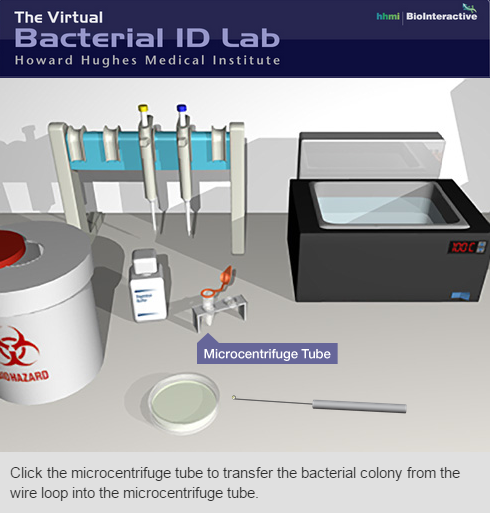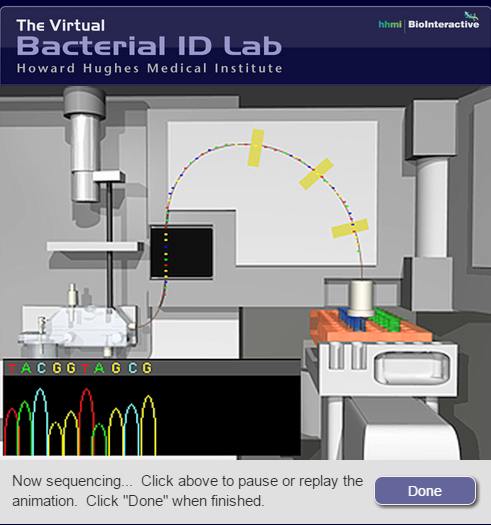As I worked through the lab, I answered the following questions so that I could gain a deeper understanding of the activity.
1. As the medical technician in charge of this investigation, what are you trying to determine about the tissue sample provided to you?
As a lab technician, I am trying to determine what bacteria is contained in the tissue sample.
2. How did you prepare the DNA to be used in this investigation?
During the investigation, the DNA was prepared by adding digestive enzymes and buffers to a bacterial sample. The microcentrifuge tube containing the sample sat for several hours, and was then heated in order to activate the digestive enzymes. Once the sample was denatured, the sample was placed in a centrifuge to remove cellular debris from the sample.
PCR causes a reaction that can be tested by comparing positive reactions to negative reactions. By running the sample through various temperatures, the double helix structure of the DNA was unwound and separated into single strands, where it was then copied by the DNA polymerase.
4. Summarize the technique used to purify the PCR product.
To purify the PCR product, more buffer is added to the sample.The remaining PCR product is placed into a column and then into a centrifuge, so that only the long lengths of PCR remain with the sample of DNA. While in the column, the product is separated from the non-useful components, and then again when the DNA is separated from the rest of the product.
5. What is produced during the sequencing prep PCR run?
During the sequencing prep PCR run, the DNA was prepared in 12 sequencing brews that contained primers, buffers, polymerase, nucleotides, and florescent-tagged terminators. This produced multiple DNA strands that varied in length.
6. Describe how the automatic sequencer determines the sequences of the PCR products.
The automatic sequencer determines the sequences of the PCR products through Gel Electrophoresis, where the samples are exposed to positive and negative electric charges. Since DNA contains a negative charge, it is carried to the positively charged area, expressing the notion that "opposites attract". The molecules are separated based on their size. Where they cease movement in the gel, scientists are able to read these bands as the basic genetic code: G,C, A, or T.
7. What does BLAST stand for?
BLAST is an acronym for "Basic Local Alignment Search Tool".
8. What conclusions did you make using the results of the BLAST search? Did these conclusions support a clinical diagnosis for the patient (what disease did they have)?
After analyzing the results from the BLAST search, it can be concluded that the patient had Bartonella henselae.
I hope you enjoyed this lab as much as I did, while gaining insightful information about DNA sequencing.







No comments:
Post a Comment